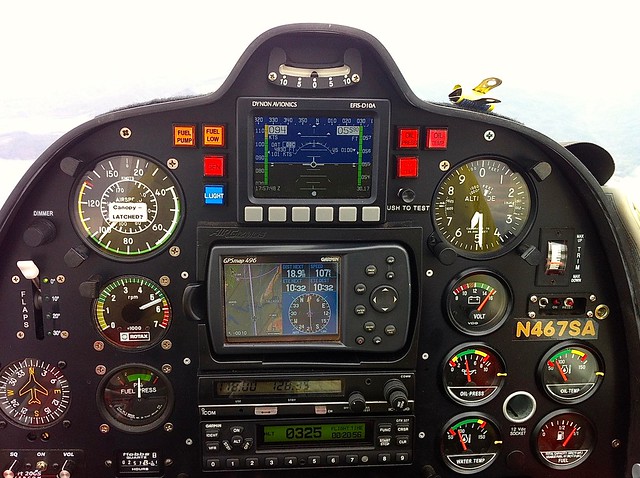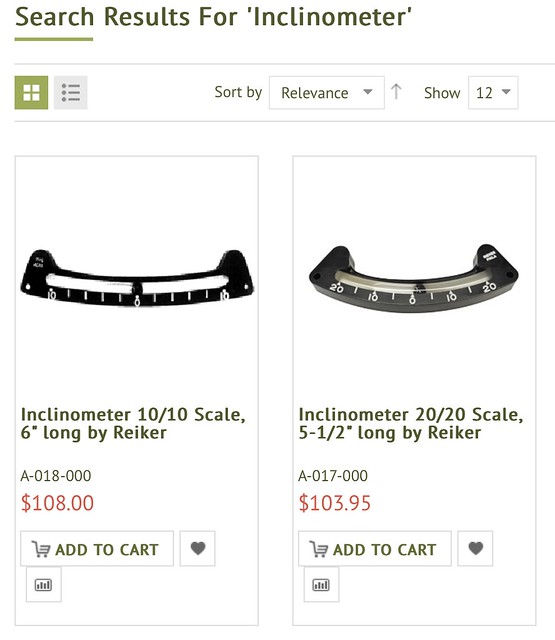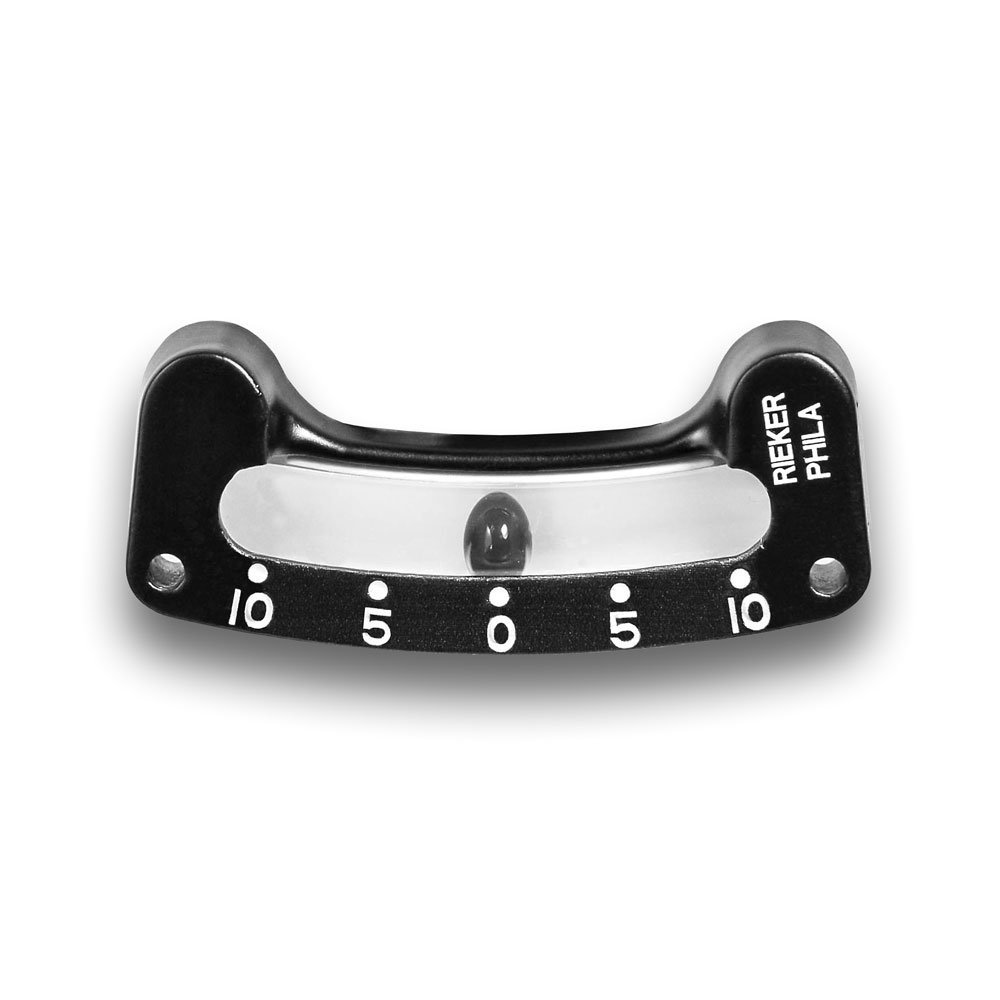Went to a buddies hangar today and he’s redone the dash of his experimental “Cub”. He mounted his indicator in the upper left corner. Is it more accurate if it’s mounted in the centerline of the aircraft or does it matter? Trying to get my head wrapped around all of the physics going on there.
You are using an out of date browser. It may not display this or other websites correctly.
You should upgrade or use an alternative browser.
You should upgrade or use an alternative browser.
Mounting an inclinometer aka slip/skid Ball
- Thread starter Skip
- Start date
As I recall it doesnt matter much for an inclinometer to be mounted off the centerline as I believe most are. However if using a yaw string it must be mounted on the centerline.Is it more accurate if it’s mounted in the centerline of the aircraft or does it matter
FastEddieB
Touchdown! Greaser!
- Joined
- Oct 14, 2013
- Messages
- 11,421
- Location
- Lenoir City, TN/Mineral Bluff, GA
- Display Name
Display name:
Fast Eddie B
How could an inclinometer ever be helpful for “winds”?Bell, he’s just using it for coordinated flight etc. Not using it like I’ve seen some in slow planes for winds etc. Every Cessna I’ve ever flown was off center.
Back to the question, I don’t think its location relative to the aircraft centerline makes any difference - few are. Though front and center is an elegant place for one!

The string mentioned above my post. I’ve never fully understood why some helicopters have that string when in fact they have expensive instruments. One could say winds… rotor wash comes to mind. Hope that clears up the chat.How could an inclinometer ever be helpful for “winds”?
Back to the question, I don’t think its location relative to the aircraft centerline makes any difference - few are. Though front and center is an elegant place for one!

FastEddieB
Touchdown! Greaser!
- Joined
- Oct 14, 2013
- Messages
- 11,421
- Location
- Lenoir City, TN/Mineral Bluff, GA
- Display Name
Display name:
Fast Eddie B
A yaw string is a very different animal from an inclinometer.
First, they only work well in a glider or with a pusher prop. Or maybe a twin.
Second, they really don’t show “wind”, per sé. Only slip or skid. I guess that could be seen as “relative wind”, though that’s not how we normally use that term.
First, they only work well in a glider or with a pusher prop. Or maybe a twin.
Second, they really don’t show “wind”, per sé. Only slip or skid. I guess that could be seen as “relative wind”, though that’s not how we normally use that term.
FastEddieB
Touchdown! Greaser!
- Joined
- Oct 14, 2013
- Messages
- 11,421
- Location
- Lenoir City, TN/Mineral Bluff, GA
- Display Name
Display name:
Fast Eddie B
A bit off topic, but here’s a yaw string at work in a side slip exercise:
Stewartb
Final Approach
High and centered is where it should be in a Cub. Sadly mine is low. Precious real estate. I added one to verify the G3X was accurate. It has been, so my inclinometer is along for the ride.
A yaw string or slip string is more sensitive than an inclinometer. You can still fly "sideways" with an inclinometer. In VFR helicopters the preferred is the string provided it came with the aircraft. Not all do. Plus at night the string doesn't work very well. In forward flight rotorwash has zero influence on it.I’ve never fully understood why some helicopters have that string when in fact they have expensive instruments.
PaulS
Touchdown! Greaser!
I doubt an inclinometer would work well in an airplane. That's why they use gyros.
MauleSkinner
Touchdown! Greaser!
Pity you’ve never flown one of the many thousands of airplanes that have them, so you’d know for sure.I doubt an inclinometer would work well in an airplane. That's why they use gyros.
PaulS
Touchdown! Greaser!
Pity you’ve never flown one of the many thousands of airplanes that have them, so you’d know for sure.
Oh, you guys are talking about a slip indicator. Pretty useful for telling you if the airplane is slipping or skidding. Pretty useless to tell how much the airplane is inclined or banked.
FastEddieB
Touchdown! Greaser!
- Joined
- Oct 14, 2013
- Messages
- 11,421
- Location
- Lenoir City, TN/Mineral Bluff, GA
- Display Name
Display name:
Fast Eddie B
They’re properly called inclinometers. From Wag Aero:Oh, you guys are talking about a slip indicator. Pretty useful for telling you if the airplane is slipping or skidding. Pretty useless to tell how much the airplane is inclined or banked.

Also pretty useless for anything else they’re not designed to show.
And Lord, everything has gotten SO expensive!
Capt. Geoffrey Thorpe
Touchdown! Greaser!
- Joined
- Jun 7, 2008
- Messages
- 15,634
- Location
- DXO124009
- Display Name
Display name:
Light and Sporty Guy
PaulS
Touchdown! Greaser!
Yeah, I don't think I've heard it called that since I studied for my ppl a long time ago. I'm looking for an inclinometer for my side by side, to use to measure the angle when going up or across hills. Waiting for the other indication, when the wheels start to leave the ground is not an appealing option for me. As I said, useless for measuring tilt angle in a flying aircraft so kind of a misnomer in that application.
FastEddieB
Touchdown! Greaser!
- Joined
- Oct 14, 2013
- Messages
- 11,421
- Location
- Lenoir City, TN/Mineral Bluff, GA
- Display Name
Display name:
Fast Eddie B
I was thinking of mentioning such a thing, often used for camping trailers and the like. Not certified, but sticking one on with mounting tape or Velcro should be kosher.
MauleSkinner
Touchdown! Greaser!
It would have to be installed properly, as it’s not adjustable like the ones in airplanes.I was thinking of mentioning such a thing, often used for camping trailers and the like. Not certified, but sticking one on with mounting tape or Velcro should be kosher.
MauleSkinner
Touchdown! Greaser!
It measures the tilt angle from the resultant of gravity and turning forces. A perfectly accurate name.As I said, useless for measuring tilt angle in a flying aircraft so kind of a misnomer in that application.
sarangan
Pattern Altitude
- Joined
- Jun 7, 2008
- Messages
- 1,896
- Display Name
Display name:
Andrew, CFI-I
Went to a buddies hangar today and he’s redone the dash of his experimental “Cub”. He mounted his indicator in the upper left corner. Is it more accurate if it’s mounted in the centerline of the aircraft or does it matter? Trying to get my head wrapped around all of the physics going on there.
It is a simple carpenter's level, except the bubble in a carpenter's level floats to the top whereas the ball in an inclinometer sinks to the bottom. In this context, 'bottom' refers to the resultant force of gravity plus any centrifugal force. So it doesn't matter where you mount it. The ball being centered means a glass of water in the airplane will not spill. It does not convey much information about the aerodynamic condition of the airplane. It is possible for the ball to be centered, and the airplane to not be in its minimal drag configuration, or vice versa.
Not a single gyro to be found in my airplane, but I do have an inclinometer.I doubt an inclinometer would work well in an airplane. That's why they use gyros.
It measures the inclination of the local acceleration vector relative to the aircraft's centerline.
martym
Pre-takeoff checklist
Those are not designed to be used in airplanes. Because they resemble slip/skid instruments, people think they are the same.They’re properly called inclinometers. From Wag Aero:

Also pretty useless for anything else they’re not designed to show.
And Lord, everything has gotten SO expensive!
martym
Pre-takeoff checklist
I have 2 of those on my camper. They are not much good to see if the camper is slipping or skidding.
Stewartb
Final Approach
My inclinometer is by Rieker and has a PMA for installation in aircraft. Rieker makes other inclinometer instruments, too.

 www.riekerinc.com
www.riekerinc.com

1040 Mechanical Inclinometer | Slip Indicator
Our 1040 is a compact rugged quick reference slip indicator with decades of aviation history. The small die-cast housing fits space-limited instrument panels, the engraved filled white markings make it easy to read quickly and will not wear off. This unit is FAA 8130-3 certified under our PMA...
 www.riekerinc.com
www.riekerinc.com
FastEddieB
Touchdown! Greaser!
- Joined
- Oct 14, 2013
- Messages
- 11,421
- Location
- Lenoir City, TN/Mineral Bluff, GA
- Display Name
Display name:
Fast Eddie B
Those are not designed to be used in airplanes.
Apparently they are.
PaulS
Touchdown! Greaser!
I suspect one of the first uses of an inclinometer in an airplane was to measure pitch and roll relative to the horizon and was quickly found to be useless in that role. I won't be calling it an inclinometer. I'll call it the ball. You guys have at it.
Stewartb
Final Approach
Like that flippy thingy on the tail. Guys call it an elevator. I call it a pitch controller. Chuckleheads.
Capt. Geoffrey Thorpe
Touchdown! Greaser!
- Joined
- Jun 7, 2008
- Messages
- 15,634
- Location
- DXO124009
- Display Name
Display name:
Light and Sporty Guy
That's because they are.people think they are the same.
A ball in a curve tube filled with a fluid for damping.
MauleSkinner
Touchdown! Greaser!
I’ll use the FAA terminology to avoid confusion.I suspect one of the first uses of an inclinometer in an airplane was to measure pitch and roll relative to the horizon and was quickly found to be useless in that role. I won't be calling it an inclinometer. I'll call it the ball. You guys have at it.
PaulS
Touchdown! Greaser!
Like I said, have at it. "Hey, keep that inclinometer centered!!" " Step on the inclinometer!" Sounds good.I’ll use the FAA terminology to avoid confusion.
MauleSkinner
Touchdown! Greaser!
no, I said I’d use the FAA terminology.Like I said, have at it. "Hey, keep that inclinometer centered!!" " Step on the inclinometer!" Sounds good.
I’m certainly not going to go to my mechanic and tell him “my ball broke and the fluid ran down the panel onto the floor. Can you clean it up and order me a new one? Looks like it’s only two screws to fix it.”
Last edited:
PaulS
Touchdown! Greaser!
Lol, the airplanes I'm flying now have a bar.no, I said I’d use the FAA terminology.
I’m certainly not going to go to my mechanic and tell him “my ball broke and the fluid ran down the panel onto the floor. Can you clean it up and order me a new one? Looks like it’s only two screws to fix it.”
